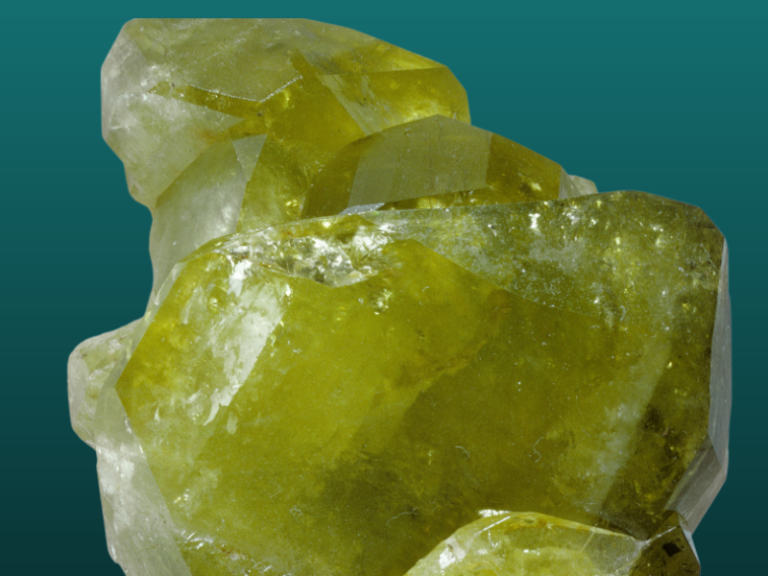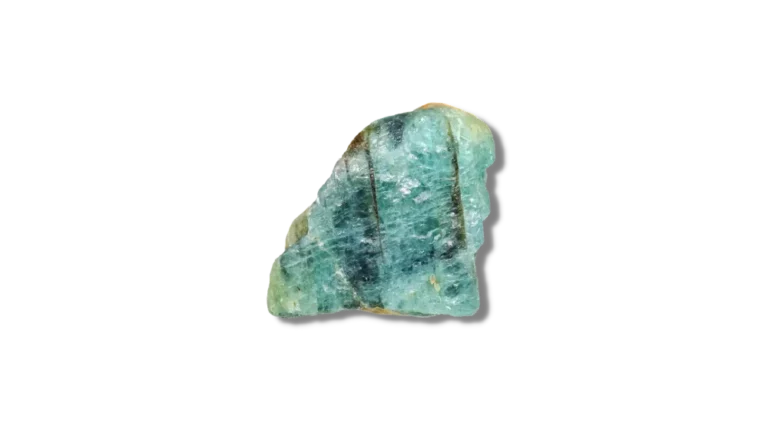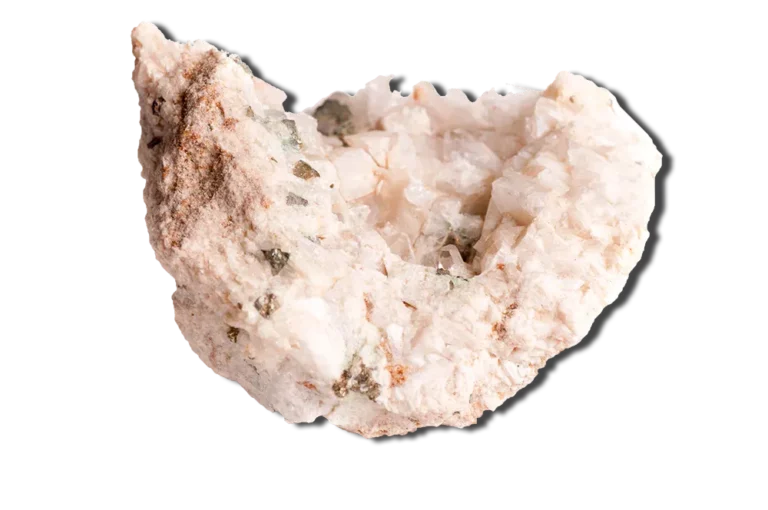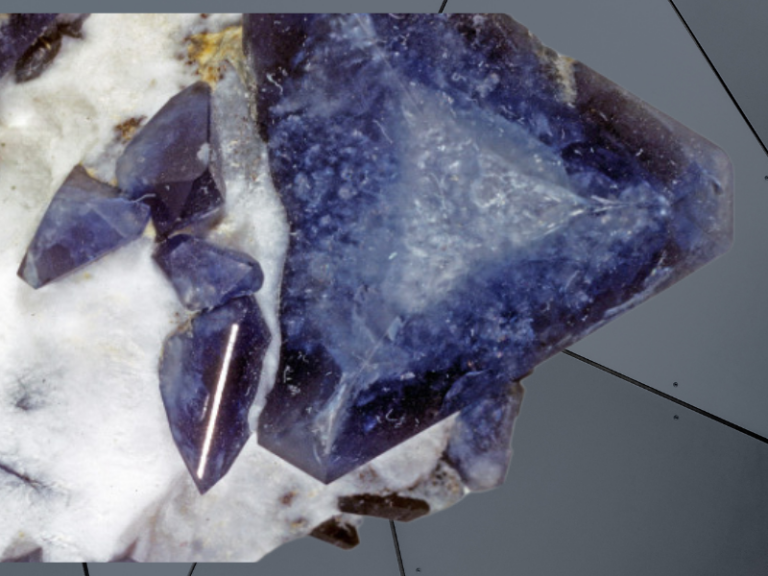Freshwater Pearls: Properties, Benefits & Meanings
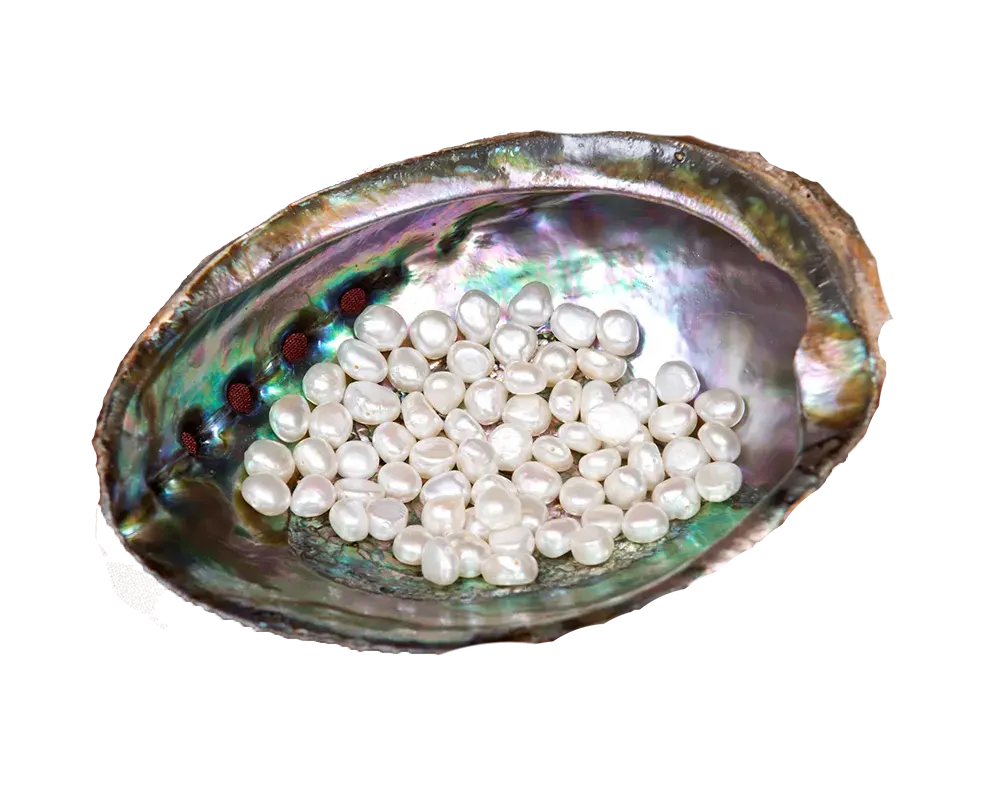
Freshwater Pearls Overview
Freshwater Pearls are a beautiful and rare variety of pearl gemstones that are created in an artificial environment. These stones are farmed from mollusks within a freshwater environment.
This article will take a look into the properties, meanings, and uses of Freshwater Pearls.
What are Freshwater Pearls?
Freshwater pearls are beautiful, nuanced stones that have captured the attention of gemologists since ancient times. Although they are quite fragile, their beauty and luster make them worth the hassle.
Many pearls are usually strung together into necklaces or bracelets, where these stones symbolize purity and motherhood. They are connected to the heart and throat chakra of the human body and have abilities corresponding to those chakra points.
Production
A pearl is a complex, shining object that forms within an oyster’s soft tissue (specifically the mantle) or another type of mollusk.
Like the mollusk shell, which is produced by layers of calcium carbonate depositing in crystalline form, pearls are made from calcite or aragonite.
Though the most prized pearls are perfectly round and smooth, a variety of other shapes—known as “baroque” or irregularly shaped—also occur naturally.
Farmed mollusks create cultured freshwater pearls in freshwater environments. The U.S. Federal Trade Commission requires that cultivated freshwater pearls be called “freshwater cultured pearls” in commerce to not mislead consumers about their quality or value relative to genuine natural pearls.
Freshwater pearls form in different species of freshwater mussels, which live in lakes, rivers, and other bodies of fresh water. These pearl mussels occur not only in the tropics but also in colder areas such as Scotland, where they are protected under the law.
Pearl Etymology
The English word pearl comes from the French perle, derived from the Latin perna meaning “leg,” due to its association with the pearly inham- or mutton leg-shaped bivalve.
The family of pearl-bearing oysters, Margaritiferidae, gets its name from the Old Persian word for pearl— “margārīta” — a reference to Saint Margaret.
Freshwater Pearl Industry
Notwithstanding Japan’s lack of a freshwater pearl industry today, the country has an important place in history for cultivating natural freshwater pearls—first from Hyriopsis schlegeli found in Lake Biwa.
The industry’s recent comeback attempt—a hybrid mussel developed in Lake Kasumigaura (Japan) during the last decade of the 20th century—has also failed, with production ceasing in 2006.
The Tennessee freshwater pearl farms are North America’s only freshwater pearl operation. Pearl farmer John Latendresse founded it, and his son continues to operate it as a tourist attraction.
China is the only country currently producing freshwater pearls commercially. In 2005, Chinese pearl producers harvested 15,000 tons of tetragon mussels and several hybrid species to meet world demand for these precious gems.
Where are Freshwater Pearls found?
Freshwater pearls are obtained from the following countries:
- China (Still in Production)
- United States (USA) (Production Ceased)
- Japan (Production Ceased)
What are the physical properties of Freshwater Pearls?
They have the following physical properties:
| Mineral Group | Pearls |
| Formula | CaCO3 |
| Color | White, Pink |
| Hardness (Mohs scale) | 2.5 – 4.5 |
| Refractive Index | 1.52 to 1.66 |
| Pleochroism | 0.156 |
| Crystal System | Orthorhombic |
| Specific Gravity | 2.60 – 2.85 |
| Transparency | Translucent, Opaque |
What is the typical appearance of Freshwater Pearls?
Freshwater Pearls exhibit a lustrous shine because the light is reflected, refracted, and diffracted by their translucent layers. Therefore, the more layers in a pearl and the thinner they are, the more refined its luster will be.
Freshwater Pearls’ iridescence is caused by overlapping successive layers, which break up light hitting their surface.
Cultured freshwater pearls come in various colors—White, pink, silver-, cream-, golden-colored and green are among the most common. However, when viewed through their top layer, the most valuable pearls have a luminous luster reminiscent of metal surfaces like platinum or silver.
Because they don’t have a bead nucleus, they are solid nacre. In contrast to saltwater Pearls, baroque shapes predominate in freshwater varieties—that is, the strand will consist mainly of irregularly shaped pearls rather than round ones. The sizes can run from six to ten millimeters.

Adorn in elegance. James Allen’s 14K Gold Pearl Bracelet: Timeless beauty, freshwater pearls on yellow gold.
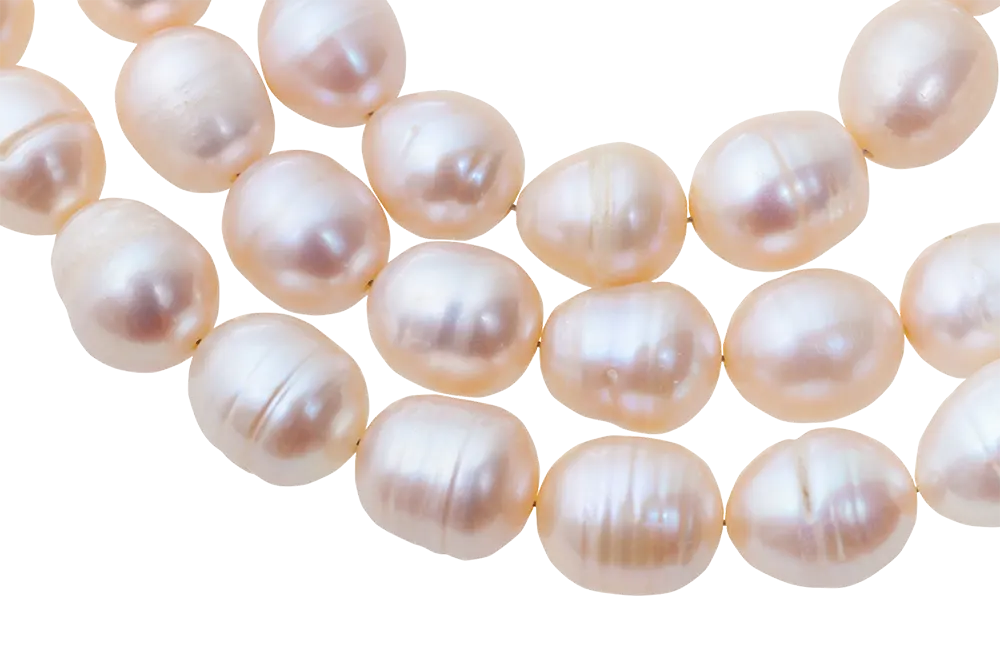
Freshwater Pearl Price and Value
Cultured freshwater pearls are valued according to a grading system that considers each pearl’s luster, shape, and surface concerning its color.
- Size: Price increases drastically with an increase in size as larger pearls are rarer. The most common sizes of Freshwater pearls range from 6 mm to 10 mm (around 0.31 inch).
- Shape: The shape of the pearl has a significant impact on price. A round or near-round shape is considered the most desirable, followed by an oval or drop shape. The least common shapes are button and teardrop-shaped pearls.
- Surface: The surface quality of a freshwater pearl is also essential, as it affects its luster and shine when worn with other jewelry items.
- Color: The color of the Freshwater Pearl influences its value as well. Some colors are more desirable than others. Even though they come in a wide variety of colors, Peacock pearls are one of the more valuable ones.
How can you tell if a Freshwater Pearl is real or not?
One of the best ways to tell if a Freshwater pearl is natural or not is to use a loupe. A loupe is an instrument used by gemologists and jewelers to examine gems and jewelry. It consists of two lenses in a frame with a handle attached, which allows you to magnify your view of the item being inspected.
Some easy methods you can use at home are:
- Color: Check the color for vibrancy and monotony. If it’s monotonous and lacks depth, it is likely fake. Look for natural color changes, which are most common in the center of the pearl.
- Luster: Look for a good luster, which is how light reflects off the pearl. If your freshwater pearl has no shine or has a poor sheen, it’s probably fake.
- Surface: Examine the surface of your Freshwater Pearl closely. It is probably fake if you see lines or cracks in it.
- Comparing: Compare the pearl you are inspecting to other pearls of the same type. It is likely fake if it differs in size, shape, or color. You can also compare your pearl against pictures of real ones online.
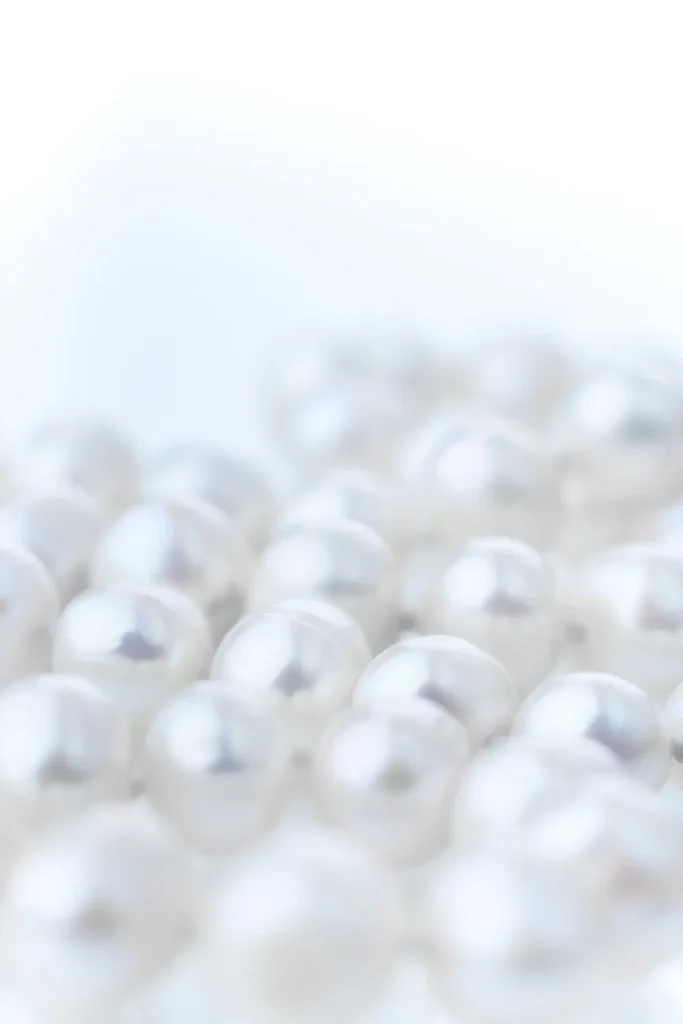
Freshwater Pearl Chakra Association
- The throat chakra is associated with freshwater pearls. This means that wearing one of these beautiful gems will help you communicate effectively and freely. You may even find yourself speaking more clearly than ever before.
- The heart chakra is associated with freshwater pearls. This means that if you wear one of these beautiful gems, it will help you to love yourself and others unconditionally. You may even feel more connected to people around you than ever! The third eye chakra is associated with freshwater pearls.
Where are the Chakras, as mentioned earlier, located?
- The heart chakra, or Anahata, is present near your heart in the center of your chest. It’s easy to see why it influences our emotions and ability to love others—and ourselves!
- The throat chakra, situated in the center of the neck at the height of the thyroid gland and linked to processing energy through temperature, growth, and metabolism, is also associated with such mouth parts as the jaw’s tongue, pharynx palate, shoulders, and neck.
What does the Freshwater Pearl Symbolize?
Freshwater Pearl symbolizes the following:
- Peace and tranquility: A pearl necklace symbolizes peace and quiet. It can help you find your inner calm and bring peace to your life. The powerful energy of the pearl will help you stay calm in times of stress, which can be very useful if you suffer from anxiety or panic attacks.
- Humility and simplicity: Pearl earring is a symbol of modesty and simplicity. It represents the beauty that can be found in everyday life rather than glamour and glitz. This quality can help you feel satisfied with what you have rather than constantly striving for more money or material possessions.
- Purity, innocence, and kindness: A pearl symbolizes purity, integrity, and compassion. It represents your inner child and the joy that can be found in playfulness. This quality can help you to see the good in everyone around you instead of focusing on their flaws.
- Motherhood, fertility, and childbirth: A pearl symbolizes motherhood, fertility, and birth. It represents the love between a child and mother and the potential for new life. This quality can help you feel connected to your mother and children, as well as other women who are also mothers.
- Good fortune, protection, and happiness: A pearl symbolizes good luck, safety, and happiness. It represents the joy that can be found in simplicity and nature. This quality can help you find balance in your life and appreciate what you have instead of seeking more material things.
- Longevity: A pearl is a symbol of longevity. It represents the enduring nature of love and friendship. This quality can help you feel connected to those who have passed away, as well as those who are still living.
What are the uses of Freshwater Pearls?
Freshwater pearls have the following uses:
- They have been used for jewelry for many years. They are often used to make earrings, necklaces, and bracelets. Round pearls are even shaped into rings or buttons for use in clothing and accessories. Freshwater pearls can also be made into rosaries, traditional Catholic prayer beads that have been used since the Middle Ages.
- Freshwater pearl beads help develop intuition and psychic abilities and help us see our path more clearly. In addition, they can be used to help us overcome grief and loss, as well as increase our love for ourselves and others.
- Freshwater pearls are prized for their beauty and affordability. They’re also a great way to access the power of pearl jewelry without breaking the bank. Freshwater pearl bracelets are the most affordable ways to access the metaphysical properties of pearl jewelry, especially if you’re starting to use them.
- Freshwater pearls have long been associated with purity, peace, tranquility, love, and harmony. They’re often used in jewelry as an emblem of purity and innocence, which makes them an excellent choice for bridesmaids’ gifts or bridal jewelry. The calm energy they impart can help people feeling anxious or stressed find peace in their lives again. This can help people find balance again after experiencing a loss or tragedy.
- Freshwater pearl earrings have been used for many years to symbolize love, purity, and innocence. People believed holding a pearl would help them have better vision and make them more attractive. Today these beliefs have evolved into the idea that wearing freshwater pearls will bring you good luck.
- Freshwater pearls have long been used in various healing practices around the world. The healing properties of pearls (and other gemstones) come from their vibration, which can help align your chakras and purify your energy field. Freshwater Pearls can also be used as a tool for meditation or prayer because they’re thought to help you connect with higher realms of consciousness.
- Some people believe that wearing freshwater pearls can help protect against negative energies or influences in your life. The idea is that freshwater pearls absorb these energies before entering your body, so they don’t affect your health or well-being. This makes them ideal for those interested in spiritual healing practices but unsure where to start!
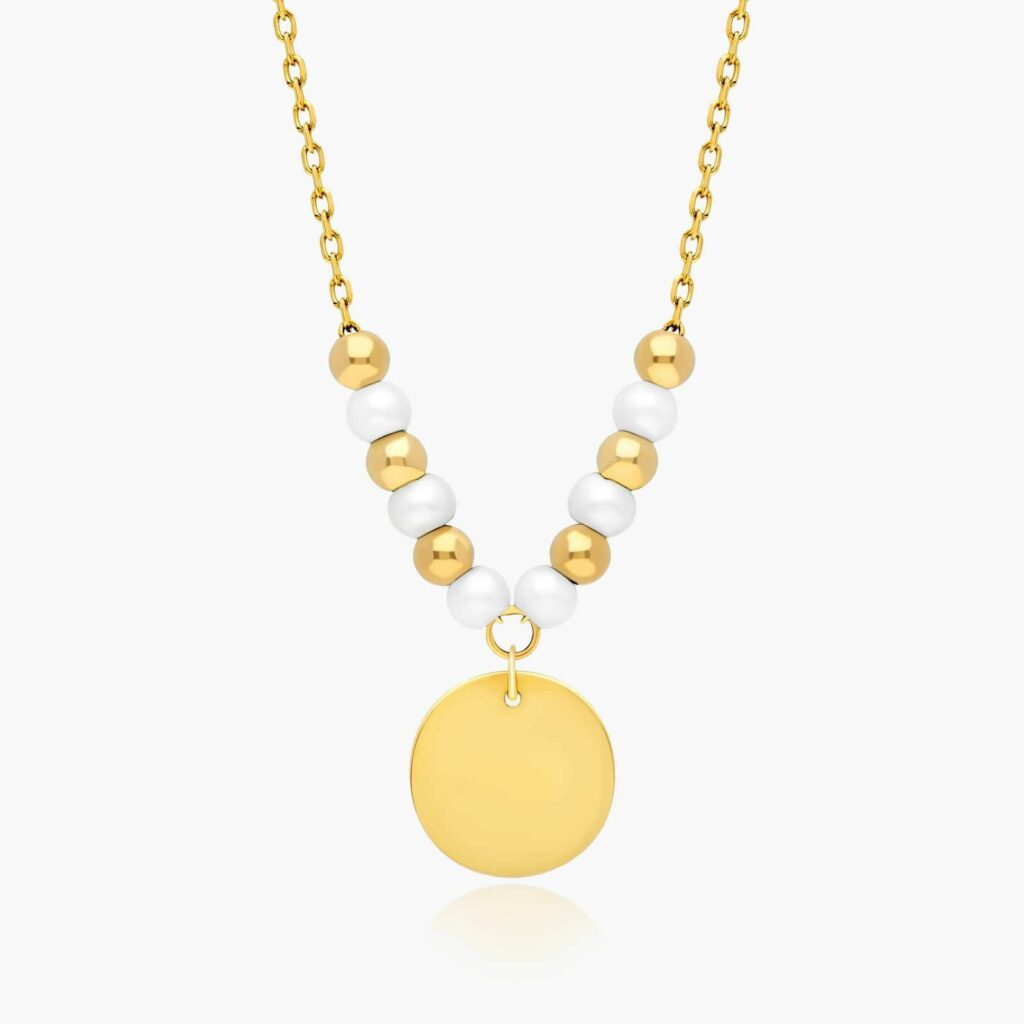
Effortless elegance: James Allen’s 14K Gold Pearl & Bead Disc Necklace. Lustrous pearls paired with delicate gold beads.
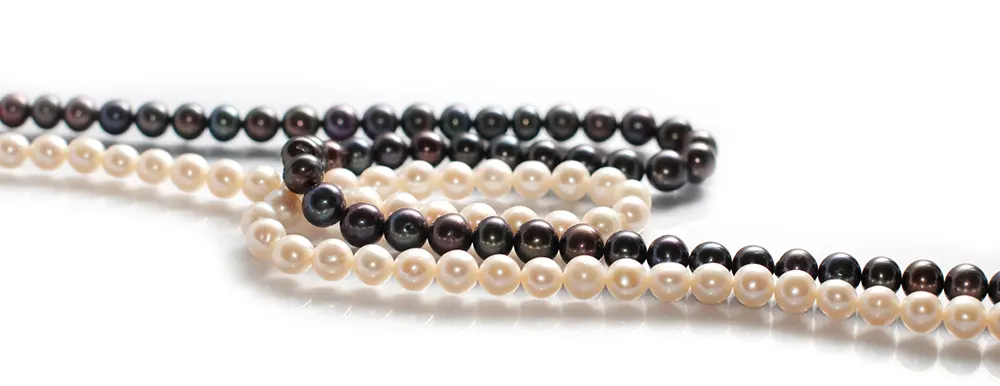
How to clean Freshwater Pearl Jewelry?
Here are some steps to help your Freshwater Pearl jewelry retain its beauty.
- Freshwater Pearls are known for their luster, but if yours develops a dull or dingy appearance, you can restore the original shine by washing it gently under warm water.
- Soak the stained area in warm water. Then scrub it gently with a soft toothbrush until all traces of the stain are gone.
- Clean your freshwater pearl by wiping it with a microfiber cloth.
- Cleanse your freshwater pearl using burning sage to remove any negativity absorbed, which can negatively impact the surroundings. There is no perfect method for cleansing pearls; you’ll have to research and experiment with different ways at home until you find the best technique.
- There are various ways to recharge your amulet, including immersing it in moonlight or burying it underground. Give it at least six hours, but overnight is ideal.
Although most ultrasonic cleaners and steamers are safe, some precautions should be taken. For example, it’s best to keep Freshwater Pearl apart from other jewelry pieces so as not to damage the finish.
FAQ
Are freshwater pearls worth anything?
Low-quality freshwater pearls are available for as little as $20, while average-quality pearls sell for between $30 and $50. South Sea Pearls can fetch from consumers between 65 to 5,000 dollars or more.
Are freshwater pearls genuine?
Freshwater pearls are real, cultured pearls produced in bodies of Freshwater—including lakes and rivers. These, unlike saltwater varieties, more closely resemble Akoya than other types of pearls, but they also produce hues ranging from blush pink to peach.
How long do freshwater pearls last?
Pearls should be restrung every 24 months, depending on how often they are worn. Genuine freshwater pearls are a proper investment: with the recent pearl trend here to stay, it is essential to follow these simple care tips to preserve their quality and color—and keep them looking good for years!
What other gemstones accompany freshwater pearls?
You can wear freshwater pearls with diamonds, emeralds, and sapphires. The most popular way to match them is with white gold or sterling silver. But if you want to be different, try pairing them with rose gold or Plume Agate.
Freshwater Pearl necklaces with Akoya pearls and Tahitian Pearls around 5-6mm in size go well in a lavender setting with a wide variety of gemstones.
What else do I need to know about freshwater pearls?
Freshwater pearls are not known for their durability, they get scratched easily. So be sure that any jewelry made of these gems stays out of the reach of children.


